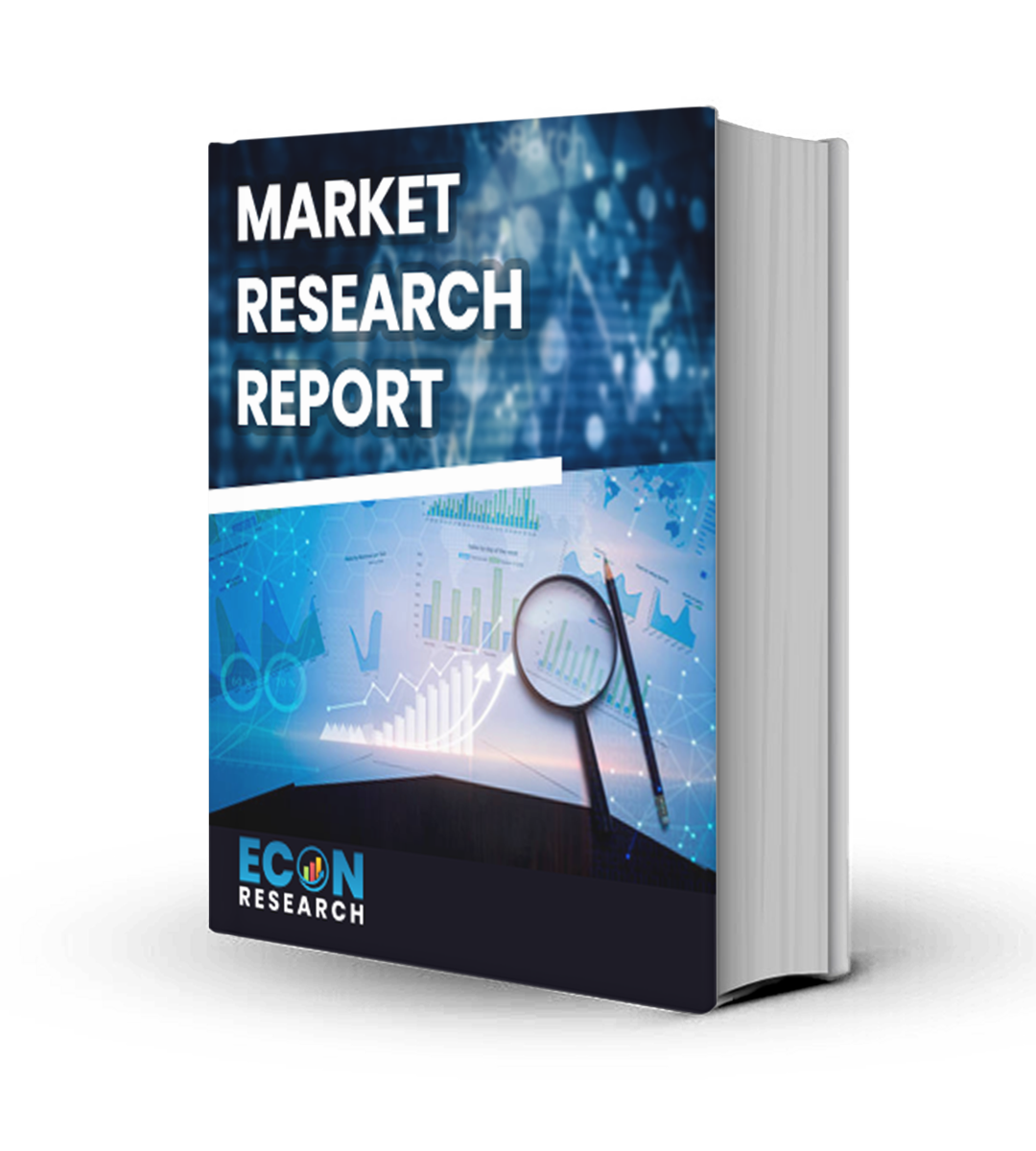Three-phase Energy Storage Inverter Market Size, Share, Trends, Growth, and Industry Analysis, By Type (Above 30KW, 12-30KW, 8-12KW and Below 8KW), By Application (Utility, Industrial & Commercial and Residential), Regional Analysis and Forecast 2032.
STUDY PERIOD: 2019-2032
BASE YEAR: 2023
HISTORICAL DATA: 2019-2022
Global Three-phase Energy Storage Inverter Market size was USD 2.83 billion in 2023 and the market is projected to touch USD 4.36 billion by 2032, at a CAGR of 5.56% during the forecast period.
Energy storage inverters play a very crucial role in integrating renewable sources, such as solar power and wind energy, into the electricity grid. The inverters control the energy flow to make optimum utilization of the stored energy during periods of peak demand such that power is fed to the grid from a source which is stable enough.
The market has been witnessing remarkable growth in recent years due to surging demand for renewable energy solutions and the existence of a need for good, reliable energy storage systems. Government regimes have also increased the adoption of energy storage inverters with clean energy initiatives pursued across the globe. Its primary applications lie in commercial buildings, industrial facilities, and utility-scale energy storage projects. The improvement in technology and reduction of prices make three-phase energy storage inverters increasingly accessible, which will help facilitate a more sustainable energy future. Growth in this trend offers avenues for manufacturers and investors in the energy sector, which will stimulate innovation and positive progress in the management of energy sources
Three-phase Energy Storage Inverter Report Scope and Segmentation.
|
Report Attribute |
Details |
|
Estimated Market Value (2023) |
USD 2.83 Billion |
|
Projected Market Value (2032) |
USD 4.36 Billion |
|
Base Year |
2023 |
|
Historical Year |
2018-2022 |
|
Forecast Years |
2024 – 2032 |
|
Scope of the Report |
Historical and Forecast Trends, Industry Drivers and Constraints, Historical and Forecast Market Analysis by Segment- Based on By Type, By Application, & Region. |
|
Segments Covered |
By Type, By Application, & By Region. |
|
Forecast Units |
Value (USD Million or Billion), and Volume (Units) |
|
Quantitative Units |
Revenue in USD million/billion and CAGR from 2024 to 2032. |
|
Regions Covered |
North America, Europe, Asia Pacific, Latin America, and Middle East & Africa. |
|
Countries Covered |
U.S., Canada, Mexico, U.K., Germany, France, Italy, Spain, China, India, Japan, South Korea, Brazil, Argentina, GCC Countries, and South Africa, among others. |
|
Report Coverage |
Market growth drivers, restraints, opportunities, Porter’s five forces analysis, PEST analysis, value chain analysis, regulatory landscape, market attractiveness analysis by segments and region, company market share analysis. |
|
Delivery Format |
Delivered as an attached PDF and Excel through email, according to the purchase option. |
Dynamic Insights
Drivers include an increase in adoption of renewable sources of energy such as solar and wind that needs more efficient energy storage solutions to keep up with supply and demand fluctuations. Governments also introduce supportive policies and incentives promoting clean energy technologies, thereby driving investments into energy storage systems. Further to that, better efficiency and grid compatibility of inverters are pulling more interest in three-phase inverters across residential and industrial applications.
But then there are challenges on the market side that can affect growth. On the one hand, the integration of energy storage systems with the existing grid may be a challenge and seem relatively complex in terms of high initial installation costs, thus making them less attractive to users. Consumers' perceptions regarding battery technologies' lifespan and performance may also have a critical impact on confidence in energy storage solutions. On the other hand, with present-day ongoing research and development efforts, such opportunities are emerging in reducing costs and improving efficiency within these energy storage systems. Associations between manufacturers of energy storage and technological providers could lead to new approaches that would outstep existing limitations. The three-phase energy storage inverter market is well-positioned to grow as the focus on energy resilience and sustainability continues to grow-for reasons both of demand for clean energy and a requirement for reliable power management solutions.
Drivers Insights
- Growing Demand for Renewable Energy
Growing importance of renewable energy resources worldwide, such as solar and wind, is promoting the three-phase energy storage inverter market. More and more nations are focusing on carbon emission reduction and thus moving towards cleaner energy, where efficient energy storage solutions that can efficiently capture and make use of renewable energy become a necessity. In essence, three-phase energy storage inverters are major stepping stones in the conversion of direct current out from wind turbines and photovoltaic solar panels to alternating current available for use on the grid. With maximum renewable energy utilization and power stability even at peak demand periods, these inverters play a very significant role in the ongoing application of renewable power systems. Government incentives and subsidies towards renewable energy project further encourage the adoption of energy storage systems, thereby driving the demand for three-phase inverters.
- Technological Advancements
Continuous advancements in inverter technology are enhancing the performance and efficiency of three-phase energy storage inverters, driving market growth. Innovations such as smart inverters that can communicate with the grid, improved energy management systems, and enhanced grid compatibility are making these inverters more appealing to consumers and businesses. These technological improvements allow for better integration of renewable energy sources, optimized energy consumption, and enhanced reliability. As the efficiency of energy storage systems increases, the cost of ownership decreases, making three-phase energy storage inverters more accessible to a broader audience, including residential users.
Restraints Insights
- High Initial Costs
Installation cost is the major constraint: one of the significant constraints that has been determined to affect the three-phase energy storage inverter market, both from the demand and supply perspectives, is the installation cost that is attached to these energy storage systems coupled with their respective inverters. The upfront investment is quite high, which may be a barrier for potential customers, especially small and medium-sized enterprises and consumers. Although costs are typically decreasing with technological gains and economies of scale, the initial outlay may be a barrier for most to install these systems. Users may also be uncertain about the long-term payback potential, particularly in communities with low-cost energy or limited financial incentives to switch to renewable sources.
- Complex Integration with Existing Grids
Another challenge is the complexity involved in integrating energy storage systems with existing electrical grids. Many infrastructures were not designed to accommodate the fluctuations and dynamics introduced by renewable energy sources and energy storage technologies. This complexity can lead to compatibility issues, requiring significant upgrades to grid infrastructure. Moreover, regulatory barriers and varying standards across different regions can complicate the implementation process, making it difficult for businesses and homeowners to adopt energy storage solutions effectively.
Opportunities Insights
- Rising Investment in Energy Resilience
There is significant scope for the three-phase energy storage inverter market as there is growing awareness about energy security and resilience with more and more businesses and communities experiencing interruptions because of extreme weather or other crises and in dire need of reliable energy solutions. Energy storage systems with three-phase inverters provide backup power during outages ensuring the continuity of operations and thus boost overall energy resilience. This demand for backup and emergency power solutions is driving investment in energy storage, making the marketplace an encouraging environment for manufacturers and suppliers in this industry.
Segment Analysis
- By Type
The three-phase energy storage inverter market is segmented by type into four categories: Above 30 kW, 12-30 kW, 8-12 kW, and Below 8 kW. The Above 30 kW segment typically serves large-scale applications, such as utility-scale renewable energy projects, where high power output is necessary to handle significant energy demands. These inverters are designed to efficiently convert large amounts of direct current (DC) from energy storage systems into alternating current (AC) for distribution. The 12-30 kW segment caters to industrial and commercial applications, providing adequate power for medium-sized enterprises that require a reliable energy supply. In contrast, the 8-12 kW segment is often utilized in larger residential installations, enabling homeowners with substantial energy needs to harness renewable energy efficiently. Finally, the Below 8 kW segment focuses on smaller residential and off-grid applications, making these inverters accessible to individual households or small businesses looking for compact energy solutions. Each type is designed with specific performance characteristics and efficiency levels to meet the unique demands of their respective applications, reflecting the diverse energy storage needs across different sectors.
- By Application
In the three-phase energy storage inverter market application segment, there will be three main areas: Utility, Industrial & Commercial, and Residential. In the Utility area, energy storage inverters play a critical role in keeping the grid stable and utilizing renewable energy sources within the broader network of electricity. They help utilities efficiently manage supply over demand, especially during peak usage hours, while helping to move toward a cleaner, more sustainable energy grid. The Industrial & Commercial segment also includes organizations whose businesses rely on massive consumptions of energy; this business area includes manufacturing plants, warehouses, and office buildings housing thousands of people. Three-phase inverters help businesses consume energy strategically and cut costs while maximizing operation efficiency by storing the energy off-peak for later use. Finally, Residential is concerned with individual houses, where an energy storage inverter could properly address the consumption of energy, serve as a back-up in case of the power needed, and make full use of renewable energy produced through a house-owned residential solar panel.
Regional Analysis
North America currently has the strongest market for this technology, significantly driven by investments in renewable energy infrastructure as well as a strong energy storage solution focus. The United States, in specific, is spearheading growth mainly because of state-level incentives for solar and wind projects, grid reliability enhancement, and technological innovations that naturally complement such a market. The presence of key market players also adds to this region's leadership.
The market in Europe is growing rapidly, due to high regulations for reducing carbon emission and employing sustainable energy usage. Firms are spending more on renewable energy and charging systems to adapt quickly to climate goals set. Such countries include Germany, the United Kingdom, and France. The support from the European Union in green technologies and initiatives to enhance energy efficiency is also an important driving factor for three-phase energy storage inverters. In the Asia-Pacific, growth has been very fast and is supported by countries like China and India who are focusing on renewable energy deployment and ensuring energy security. The region will see growth in markets as the government policies favour solar and wind energy, and industrial energy demand grows. New markets across Latin America and the Middle East start to understand and appreciate their value in energy storage systems, and thus new opportunities will come for three-phase energy storage inverter markets as they transition to modern infrastructure and sustainable development.
Competitive Landscape
The key players in the space are SMA Solar Technology AG, Schneider Electric, ABB, and Siemens-the global multi-nationals that operate efficiently within the energy technology space. The companies have made excellent use of their long experience, expansive product portfolios, and well-established distribution networks to service various customers with diverse needs within the residential, commercial, and utility realms. They, on their part, go all out into researches and innovation into developing new inverter technologies that are efficient and reliable to market them.
Another mark left by emerging companies and start-ups concentrate on niche markets with innovative solutions to the specific customer demands of smart inverters and the advanced energy management systems. For example, Fronius International GmbH and Enphase Energy are known for their approach to innovation and integration of digital technologies that make their products more appealing and functional. In addition, alliance and joint ventures are also associated with a competitive environment as companies compete in an effort to utilize mutual expertise and resources for the more rapid development of products and easier market penetration. Increasing adoption of renewable energy and the overall transition toward decentralized systems also offer an entry opportunity for new business models to disrupt the status quo.
List of Key Players:
- Power Electronics
- Dynapower
- SMA
- Sungrow
- SolarEdge
- EPC Power
- Sinexcel
- SolaX Power
- GoodWe
- Ginlong
- Growatt
- KOSTAL
- SOFARSOLAR
Recent Developments:
- Oct 2024, SOFAR, a leading global provider of solar photovoltaic (PV) and energy storage solutions, has reached a significant milestone in its operations in India by exceeding 5 GW in total Solar PV Inverter shipments. This accomplishment highlights the company's crucial contribution to India’s swift transition towards renewable energy. Remarkably, in just the first half of 2024, SOFAR shipped more than 1.3 GW, further amplifying its influence on the Indian solar market.
- Aug 2024, Huawei Nigeria Digital Power recently introduced its latest innovation in the commercial and industrial (C&I) solar market, the 150K series inverter, during a launch event in Lagos attended by numerous energy sector partners, installers, and EPCs. This launch represents a significant milestone in Huawei's dedication to providing advanced, reliable, and efficient solar solutions tailored for the African market.
Three-phase Energy Storage Inverter Report Segmentation:
|
ATTRIBUTE |
DETAILS |
|
By Type |
|
|
By Application |
|
|
By Geography |
|
|
Customization Scope |
|
|
Pricing |
|
Objectives of the Study
The objectives of the study are summarized in 5 stages. They are as mentioned below:
- Global Three-phase Energy Storage Inverter size and forecast: To identify and estimate the market size for global Three-phase Energy Storage Inverter market segmented By Type, By Application, and by region. Also, to understand the consumption/ demand created by consumers between 2024 and 2032.
- Market Landscape and Trends: To identify and infer the drivers, restraints, opportunities, and challenges for global Three-phase Energy Storage Inverter
- Market Influencing Factors: To find out the factors which are affecting the market of global Three-phase Energy Storage Inverter among consumers.
- Company Profiling: To provide a detailed insight into the major companies operating in the market. The profiling will include the financial health of the company's past 2-3 years with segmental and regional revenue breakup, product offering, recent developments, SWOT analysis, and key strategies.
Frequently Asked Questions
Request For Table of Content
Research Methodology
Multi-report Purchase Plan
A Customized Plan Will be Created Based on the number of reports you wish to purchase
InquireRelated Reports
Client Testimonials
“We value your excellent customer service, promptness in responding, flexibility in customizing reports, and pleasant manner in general. ”
June S. Lee - SBIC/SBP&T Co.,Ltd
“The study and the services provided by Econ Research have more than met my expectations. The study has good depth and breadth and was reasonably priced. Instant responses to my questions delighted me, and the project went off without a hitch. When I require information about a different industry to help my clients, Econ Research would be the first market research firm I would get in touch with.”
Dan Dybus - AlixPartners


